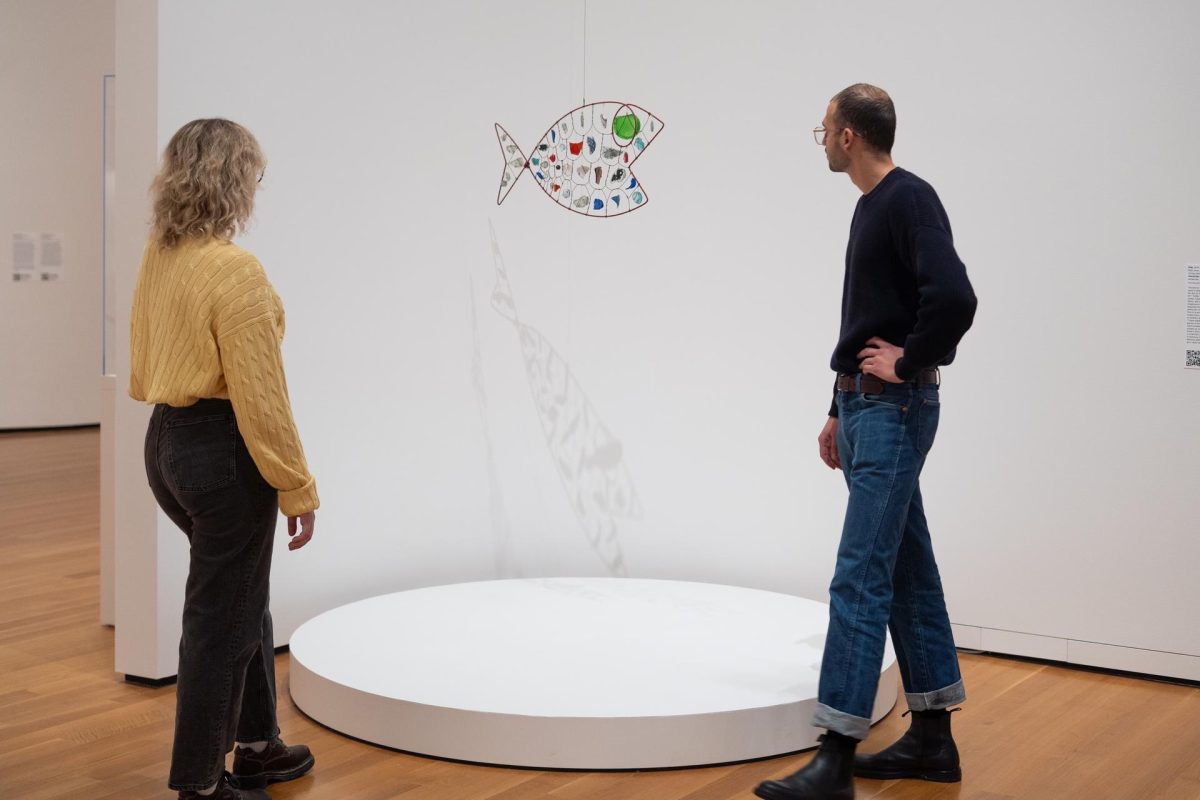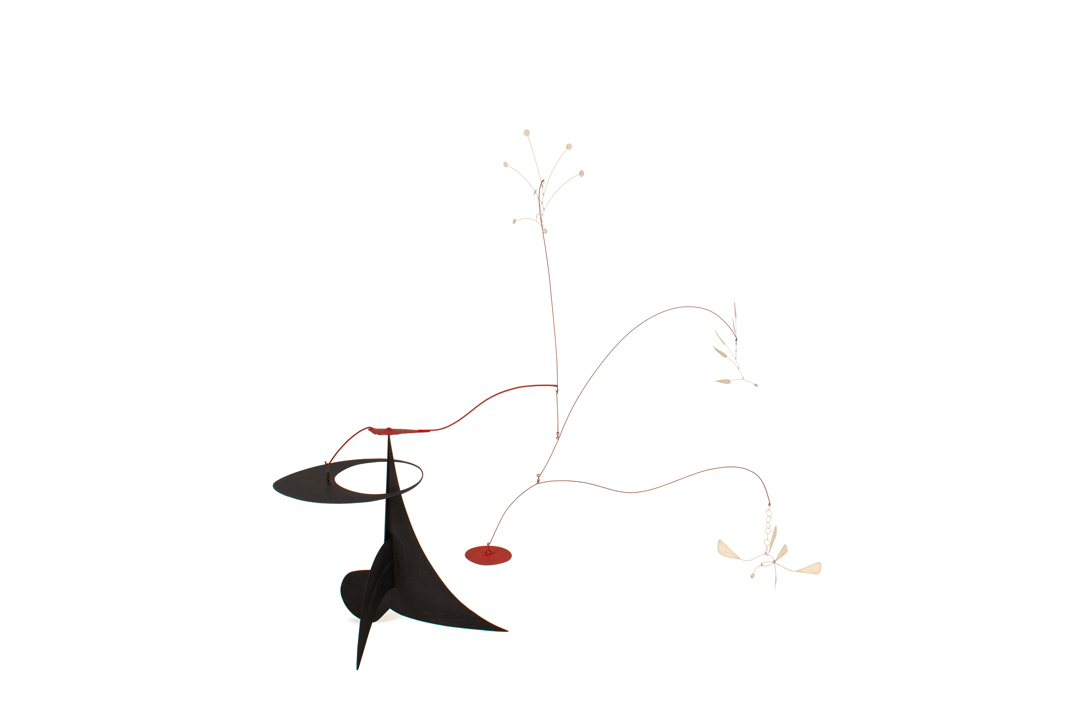Calder Smartphone Tour: Fish
“I feel that the artist should go about his work simply, with great respect for his materials. Simplicity of equipment and an adventurous spirit in attacking the unfamiliar or unknown are apt to result in a primitive and vigorous art. Somehow the primitive is usually much stronger than art in which technique and flourish abound.”
– Alexander Calder, À Propos of Measuring a Mobile
With sheet metal in short supply during World War II, Alexander Calder turned to working with bits of wood, shattered glass, ceramics, tins, and other discarded objects he collected on his farm in Roxbury, Connecticut. Between the 1940s and 1950s, he used these materials to make a dozen hanging fish. Their bodies were constructed of painted rods that were interlaced with wires to mimic scales. In each of the resulting voids, he suspended shards of glass, porcelain, and other found materials that dazzled when hit by light.
Fish—noted as John Shirley’s favorite of Calder’s works in his collection—is considered to be the earliest example of the artist’s fish mobiles.
Calder: In Motion, The Shirley Family Collection is now on view at SAM! Scan the in-gallery QR code beside Fish on your next visit to SAM to access additional information about this work as part of the exhibition’s free smartphone tour. Or, explore all 16 stops of the audio tour on your own time via our SoundCloud.
Fish, 1942
NARRATOR: Calder made a dozen hanging fish over the 1940s and 50s. This example, dating from 1942, seems to be the first of the group. Sandy Rower:
ALEXANDER S. C. ROWER: One of the unusual things about this one compared to all the others is that there are a lot of bits of mirror; and we know about a mirror that was a bistro mirror that Calder had that got broken in a fire and he repurposed pieces of that. And you see them here: you see the kind of scraped away silvering on the glass in some of the pieces. So, this one really reflects a lot of light: doesn’t just transmute the light like a stained-glass window, like many of the fish, but actually transmutes and reflects at the same time.
NARRATOR: Exhibition curator José Diaz:
JOSÉ CARLOS DIAZ: The lighting creates a shadow, actually a colorful shadow that’s also unexpected within the space, and this is something that gives you a new take on Calder, or even an extension of the sculpture itself, as sculpture as shadow.
NARRATOR: The use of a broken mirror may say something about the time this mobile was made. During the Second World War, Calder felt that sheet metal should be reserved for the war effort; instead, he turned to discarded materials. One useful source was a dump near his studio in Connecticut.
ALEXANDER S. C. ROWER: He dug out this mound and found many bits of colored glass and assortments of bits of metal and pieces that he started to incorporate as kind of enticing objects in sculpture. Clearly this Fish has some of those and other things. You can see that there’s a piece of Chinese porcelain and some other bits of pottery from sources unknown.
– Lily Hansen, SAM Marketing Content Creator
Image: Installation view of Calder: In Motion, The Shirley Family Collection, Seattle Art Museum, 2023, © 2024 Calder Foundation, New York / Artists Rights Society (ARS), New York, photo: Chloe Collyer.

